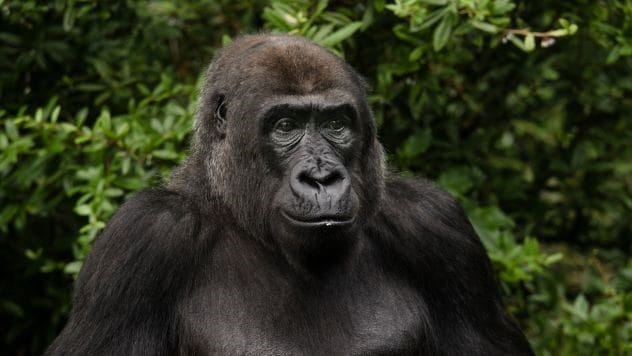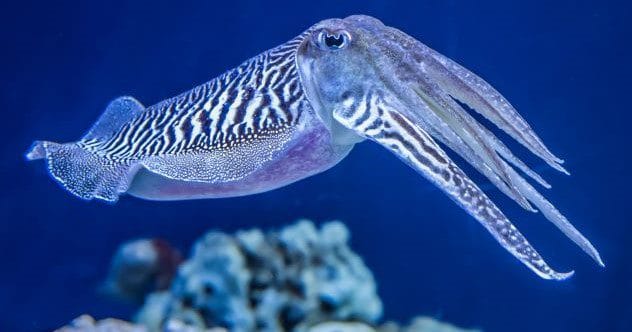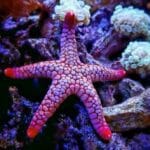A list for all nature enthusiasts! We’re diving deep into the wild world of the animal kingdom. These amazing discoveries give us a dazzling look into the diverse and often surprising behaviors of creatures, big and small.
We’ll journey from the deep ocean, where king crabs hitchhike, to Germany’s radioactive boars, taking in all kinds of oddities along the way. Nature never fails to amaze, and these stories prove it.
A New Treatment for Gorilla Arthritis

Arthritis doesn’t just affect humans. All sorts of animals can get it, including gorillas. When staff at the Budapest Zoo saw Liesel, an older female, struggling to walk, they worried that her joints were swollen.
There isn’t a widespread “cure” for arthritis. But a team of international scientists is working on a way to reverse the effects of arthritis using stem cells. They are part of Stem CellX, a group of stem cell experts from around the world.
In 2023, the team successfully treated Liesel. They used stem cells from the fat tissue of a younger gorilla named N’yaounda. Liesel is thought to be the first primate to have her cartilage rebuilt using the Stem CellX technique.
The Mysterious Case of Germany’s Radioactive Pigs
For years, the radioactive wild boars of southeast Germany have confused scientists. The pigs were first contaminated by radiation from the 1986 Chernobyl nuclear disaster. But the radiation levels of other local species have gone down over time. So, why are the boars still so radioactive?
This question stumped researchers, who named it the “wild boar paradox.” In August 2023, they finally found an answer.
The boars’ diets are to blame. Soil analysis showed high levels of cesium-137, which affects many fungi in the area. When the pigs eat wild truffles, they ingest harmful amounts of radioactive material.
The American Chemical Society wrote a paper on the Bavarian boars, highlighting the ecological effects of nuclear incidents. The authors noted that decisions to conduct atmospheric nuclear tests 60–80 years ago still affect wildlife and human food sources today.
Thousands of Octopuses Gather around Inactive Volcano
Scientists were intrigued to find swarms of octopuses gathered at an underwater hydrothermal spring off the coast of California. They have counted 6,000 so far, but they think there could be as many as 20,000.
Researchers believe the octopuses are drawn to the warm waters. This gathering, the largest ever seen, challenges the idea that octopuses are solitary creatures and adds to our understanding of these cephalopods.
Snoozy Penguin Sleeps over 10,00 Times Every Day
The chinstrap penguin is a master of napping, sleeping over 10,000 times a day in short bursts. Each snooze lasts about four seconds, adding up to over 11 hours of total sleep time.
Chinstrap penguins face constant danger, especially when nesting. While one parent searches for food, the other stays behind to protect the egg. They need to be alert to fend off attacks from predatory skua birds and rival penguins.
Australian Dolphins Spotted Carrying Out a Heist
Dolphins have been filmed working together to steal bait from crab pots. The dolphins use their snouts to tear fish out of the traps.
The footage shows how smart and resourceful these mammals are and highlights the problem-solving skills of two dolphins named Calypso and her calf Reggae. As conservationist Rodney Peterson says, without those two, crabbing would be much simpler.
King Crabs Seen Using Sea Pigs to Hitch a Ride
Scientists spotted young king crabs using sea pigs as a marine taxi service to hide from predators.
The crabs hide underneath the sea pigs. Researchers studied about 2,600 sea pigs and found that almost a quarter were carrying crabs.
This discovery gives us a glimpse into the oddities of marine life and shows how different species can form alliances to survive.
Are Cuttlefish as Clever as Children?
Cuttlefish proved their cognitive abilities in a recent experiment, passing the marshmallow test.
The marshmallow test is used to test children’s thinking skills. A child is given a marshmallow and told not to eat it. If they wait 15 minutes, they get a second marshmallow and can eat both.
Researchers adapted the test for cuttlefish, using two chambers full of snacks. One held raw prawn, which opened right away. The other held live shrimp, which opened after a delay. The cuttlefish chose to wait for the shrimp.
Alexandra Schnell, a behavioral ecologist, said this research suggests we’ve underestimated the intelligence of marine creatures. She noted that the cuttlefish waited up to 50-130 seconds, which is like what we see in chimpanzees, crows, and parrots.
Prehistoric Predator Worm Uncovered in Greenland
Scientists have found evidence of a giant predatory worm that lived in ancient seas. This species, called Timorebestia koprii, was about 12 inches (30 cm) long. It lived over 500 million years ago.
Fossil records suggest that Timorebestia used its jaws to eat other creatures and rise to the top of the food chain.
Researchers are excited about this discovery, which helps us understand Earth’s prehistoric ecosystems. They found thirteen Timorebestia fossils in Greenland, some of the oldest ever found. This species adds to our understanding of marine evolution.
Birds and Humans Hunt Honey Together in Mozambique
In Mozambique, people team up with a bird called the greater honeyguide to find and break open beehives. The Yao tribe harvests the honey, and the birds eat wax and beetle larvae.
Research shows that the birds and humans have a unique bond, with the honeyguides learning to recognize the calls of local tribespeople.
Brian Wood said, “The benefits of the honey-hunter-honeyguide relationship should produce long-lasting, ‘sticky’ traditions,” showing how great things can happen when unlikely partners team up.
Wrens Teach their Chicks to Sing While Still in the Egg
Scientists found that wrens teach their chicks to sing before they hatch. The young birds sing a similar tune to what their mother sang to them as eggs.
Experts have found this musical bond across multiple wren species, suggesting that the practice may have started millions of years ago.
Scientists aren’t sure why wrens do this, but they think it might stop nest infiltration by cuckoos or help the young wrens attract mates when they’re older.
Whatever the reason, it’s a fascinating look into the world of nature and early education.
From radioactive boars to singing wrens, the animal kingdom is full of surprises. These discoveries show us how amazing and adaptable animals can be.
Which discovery surprised you the most? Leave your comment below!










